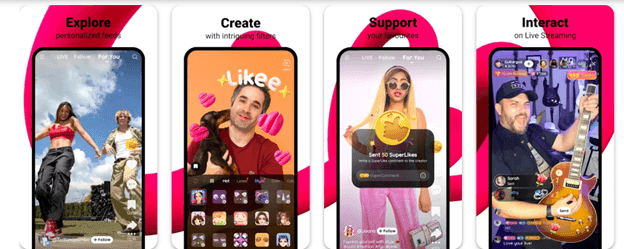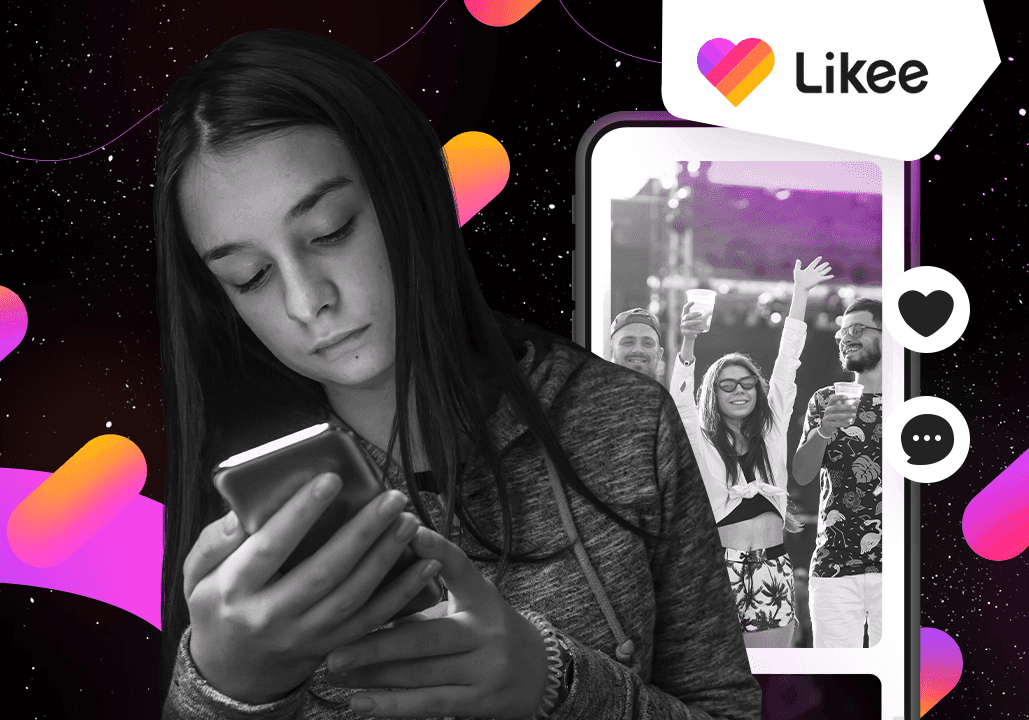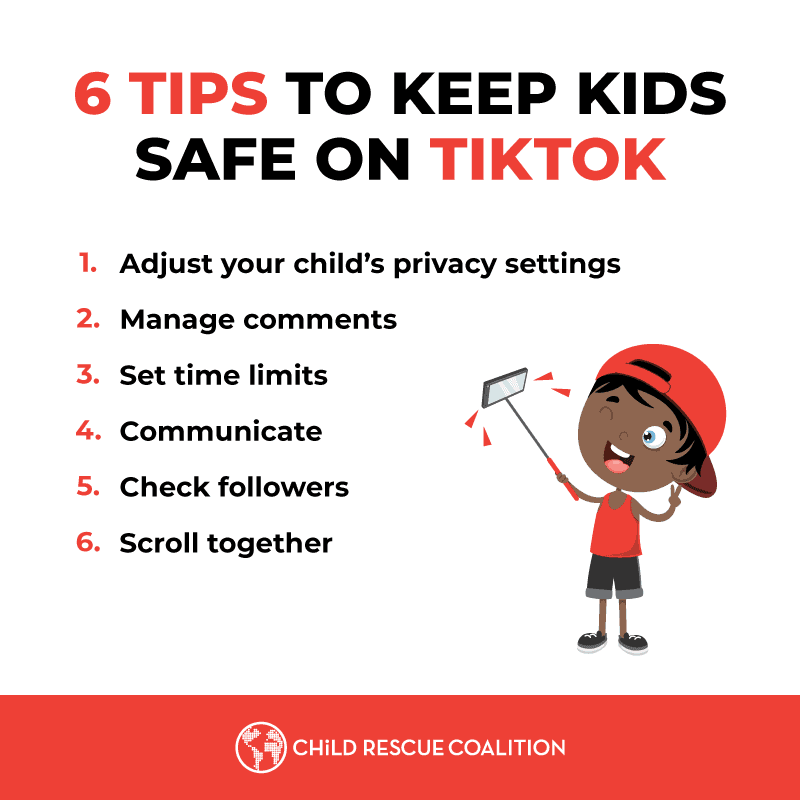Here's the uncomfortable truth: Likee poses serious safety risks for children in 2025. We're talking weak age verification, profiles that default to public, and inappropriate content that shows up within minutes of opening the app. Sure, parental controls exist—but they're limited and kids bypass them easily. This guide cuts through the marketing fluff to reveal what parents actually need to know about protecting their children on a platform that's racked up over 900 million downloads.
What is Likee and Why Parents Are Freaking Out in 2025
The Platform That's Flying Under the Radar

Let's start with the basics. Likee launched in 2017 courtesy of Singapore-based BIGO Technology, and it's quietly amassed 900 million global downloads with 33.9 million monthly active users as of late 2024. Think TikTok's edgier cousin—short video creation with AR filters, beauty effects, and live streaming capabilities that specifically target teens and young adults.
Here's where it gets interesting (and concerning). When TikTok went dark for 14 hours in January 2025, Likee saw a massive 143% spike in downloads and 37% jump in U.S. usage. Parents who thought they were dodging one bullet suddenly found their kids on a platform with even fewer safeguards.
The app runs on virtual currency—Diamonds and Beans that convert to real money. Coin packs range from $0.99 to $99.99, and there's this level-up system that rewards viral content with followers. You can see where this is heading, right? Kids posting increasingly risky stuff chasing those numbers.
For parents trying to manage the financial side safely, platforms like Likee diamonds top up through BitTopup offer secure payment processing with oversight features. At least you can control the spending while they're creating content.
Recent Updates That Sound Better Than They Are
The 2025 updates brought enhanced AI content detection and screen time reminders—building on parental controls that first appeared November 1, 2019. Between January and May 2021, they banned over 42,000 accounts for violations. That sounds impressive until you realize it highlights just how many problems they're dealing with.
Here's the kicker: age ratings vary wildly by country. 13+ in the USA, UK, and Canada. 14+ in Spain and Italy. 15+ in Australia, France, and New Zealand. Germany and other EU countries say 16+. But here's what really matters—you don't need any profile or age verification to browse videos. None. Kids can access everything regardless of these ratings.
Oh, and several countries have banned it entirely. India dropped the hammer in July 2020, Bangladesh followed suit. When entire nations are saying nope due to security and child safety concerns, that should tell you something.
Why Kids Are Drawn to This Digital Playground
I'll give Likee credit where it's due—their special effects library is genuinely impressive. Face Morph technology, SuperMix features that honestly surpass many competitors. The app's 296.9 MB, supports 40+ languages, runs on iOS 15.0+, iPadOS 15.0+, and macOS 12.0+ with M1 chip compatibility. Users pick interests like makeup, basketball, travel for personalized feeds.
But here's the problem: that endless autoplay feed lacks TikTok's one-hour daily limit for under-18 users. We're seeing excessive screen time, poor sleep patterns, declining grades. The usual suspects when kids fall down these digital rabbit holes.
The Real Safety Assessment: What Actually Happens vs. What Should Happen
What Our Testing Revealed (Spoiler: It's Not Good)

I spent time testing this platform, and the results were immediate and concerning. Within minutes of opening Likee, you're hit with sexually charged videos, provocative dances, and suggestive content featuring what appear to be minors. This isn't buried deep in some dark corner—it's right there in the main feed.
Unlike TikTok, Likee accounts stay public by default with no option for complete privacy. The platform includes gender-based search filters and nearby user discovery. Think about that for a second—predators can literally search for children by gender and location.
The numbers are sobering. An estimated 500,000 daily online predators target children through apps like Likee, exploiting those public profiles and unrestricted messaging. Real incidents include documented cases from Eau Claire, Wisconsin, where parents found explicit posts and messages from pedophiles on their daughter's phone. Another case involved a 10-year-old manipulated into sending inappropriate images.
For families wanting safer purchase management, services that buy Likee diamonds cheap through BitTopup provide transparent pricing and secure transactions. It's one less thing to worry about while dealing with bigger safety concerns.
Age-Specific Vulnerabilities That Keep Me Up at Night
Kids under 16 face the highest risks, and Likee's age verification is basically non-existent. Users bypass minimum age requirements by lying about birth dates during signup. Live streaming restrictions supposedly apply to 18+, but enforcement is spotty at best.
The platform's privacy score? A dismal 49%. They're collecting device details, browsing patterns, location data, and facial recognition information. That's a lot of personal data on children with minimal protection.
Financial risks emerge through virtual gifting. Kids can rack up substantial bills if payment info is saved. The games section features Ludo and Uno with real currency stakes—essentially introducing minors to gambling mechanics despite whatever parental controls exist.
How It Stacks Against Other Platforms (Spoiler: Poorly)
Likee consistently ranks as less safe than TikTok across every metric that matters. TikTok offers precise editing tools, larger audiences, private account options, and actually functional parental controls. Likee? Public-by-default profiles and unrestricted stranger messaging.
TikTok's under-18 users average 107 minutes daily with built-in time limits. Likee has zero screen time restrictions. The overall safety rating from parental reviews? 1.0/5. Experts recommend an 18+ age limit due to pervasive inappropriate content and predation risks.
That should tell you everything you need to know.
Step-by-Step Parental Controls Setup (Such As They Are)
Getting the Basic Protections in Place

Look, I'll walk you through setting up Likee's parental controls, but I want to be clear—these are band-aids on a bigger problem. Here's how to enable what little protection exists:
Open Likee, tap those three lines in the upper left corner of the home tab
Navigate to Settings at the bottom
Find 'Parental Controls' in the lower right section
Select 'Enable Parental Controls' and create a secure 4-digit PIN
Confirm that password—and here's the annoying part—you'll need to change it every seven days
This passcode-protected mode automatically sets new videos to private, blocks live broadcasts and news feeds, filters some unsuitable content, disables nearby profile discovery, prevents private messaging, blocks pop-ups, and limits in-app purchases to virtual currency only.
Notice I said some unsuitable content. The filtering isn't comprehensive.
Privacy Settings That Actually Matter

Configure these essential privacy settings—they're scattered across different menus because why make it easy?
Settings > Privacy from the main menu
Enable 'Private Account' so new followers need approval
Set 'Who Can Message Me' to 'None'—just disable it entirely
Control comments, duets, and follower list visibility in the Interaction section
Hide location data and online status in Account settings
Enable 'Don't recommend me to friends' in Relationships
Even with private account settings, profiles remain partially public. The content filtering? Still limited.
Content Filtering (With Realistic Expectations)
Here's how to activate what content filtering exists in 2025:
Update to the latest app version for AI content detection access
Enable all available filtering options within Parental Controls
Set interaction restrictions to friends-only for comments and duets
Disable content saving and sharing capabilities
Block wallet system access to prevent unauthorized purchases
Configure screen time reminders (though these aren't actual limits)
Despite all these controls, inappropriate material continues appearing in feeds. I tested this extensively—the filtering just isn't effective enough.
Advanced Safety Features (And Their Limitations)
Restricted Mode and Safe Search
Likee's restricted mode requires setup across multiple settings areas. It's not intuitive, which is part of the problem. Access through three lines icon > Settings > Privacy to configure:
Disable search functionality entirely through parental controls
Block hashtag searches that enable predator targeting
Restrict discovery through nearby users feature
Prevent appearance in recommendation algorithms
The search restrictions are all-or-nothing—either completely enabled or disabled. There's no nuanced filtering.
Communication Controls That Actually Work
These are probably the most important settings to configure:
Set comment permissions to 'Friends Only' or disable entirely
Block private messaging from everyone except approved contacts
Disable duet and collaboration features with strangers
Restrict who can view and download posted content
Block gift-giving capabilities that enable financial manipulation
These controls help mitigate direct predator contact and cyberbullying, though public comments on videos remain visible unless individually moderated.
Live Streaming: Just Say No
Live streaming is the highest risk category. For users under 18, complete restriction is non-negotiable:
Parental controls automatically disable live broadcasting
Block viewing of live streams from other users
Prevent participation in live chat functions
Disable virtual gift exchanges during streams
Restrict access to live streaming discovery feeds
Live streaming enables immediate stranger contact and financial exploitation through virtual gifts. There's no safe way for children to participate.
Monitoring Your Child's Activity: What Actually Works
Built-in Features (Spoiler: They're Limited)
Likee's native monitoring capabilities are frankly inadequate compared to dedicated parental control platforms. The 2025 updates include basic screen time reminders and usage notifications, but lack comprehensive activity reporting or detailed analytics.
You'll get better oversight through device-level controls. iOS Screen Time and Android Family Link provide more robust monitoring than anything Likee offers internally.
Third-Party Solutions That Fill the Gaps
Professional monitoring solutions offer superior oversight:
Qustodio: Detailed social media monitoring with content analysis and time limits
Bark: Scans messages and posts for concerning content across platforms
Circle Home Plus: Network-level filtering and usage controls
Family Link: Google's free solution with app restrictions and location tracking
Screen Time: Apple's built-in system with comprehensive usage controls
These tools compensate for Likee's limited native features by providing external oversight, content scanning, and usage analytics.
Screen Time Management (Because Likee Won't Do It)
Implement comprehensive screen time controls through device settings:
Set daily time limits specifically for Likee through iOS Screen Time or Android Digital Wellbeing
Configure downtime during homework, meals, and bedtime
Enable app usage notifications when limits approach
Require parental approval for app downloads and in-app purchases
Monitor weekly usage reports for concerning patterns
Unlike TikTok's built-in one-hour limit for under-18 users, Likee requires external time management tools. It's an extra step that shouldn't be necessary.
Red Flags Every Parent Needs to Recognize
Behavioral Changes That Signal Problems
Watch for these specific changes that may indicate problematic Likee usage:
Secretive behavior around device usage or quickly closing the app when you approach
Dramatic sleep pattern changes or declining academic performance
Increased requests for money or gift cards without clear explanations
New vocabulary or references to online friends you haven't met
Withdrawal from family activities or real-world social interactions
Kids experiencing cyberbullying or predatory contact often show irritability, anxiety, or reluctance to discuss online activities.
Suspicious Account Activity
Examine account activity for these concerning patterns:
Followers or interactions from significantly older users with minimal profile information
Comments containing personal questions about location, school, or family details
Direct messages from unknown users requesting private communication
Gifts or virtual currency from strangers without clear context
Videos featuring increasingly provocative content or risky challenges
The platform's public-by-default profiles make this information accessible to parents, though kids may try hiding concerning interactions.
Cyberbullying and Harassment Indicators
Identify cyberbullying through these specific signs:
Negative comments on posted videos or harassment in direct messages
Coordinated attacks from multiple accounts targeting your child's content
Impersonation accounts using your child's photos or personal information
Threats related to sharing embarrassing content or personal information
Social exclusion from online groups or collaborative content creation
Document evidence by taking screenshots before reporting to Likee's moderation team and local authorities if threats escalate.
When Things Go Wrong: Your Action Plan
Reporting Procedures (And Managing Expectations)
Likee's reporting system requires specific steps for effective documentation:
Screenshot or record evidence immediately—don't wait
Use the report function directly on videos, comments, or user profiles
Select specific violation categories: harassment, inappropriate content, impersonation, safety concerns
Provide detailed descriptions with timestamps and context
Follow up with email support for serious safety concerns
Response times vary significantly. Minor content violations might get addressed within 24-48 hours, while serious safety concerns often require multiple follow-ups.
Emergency Contacts and Support Resources
Establish emergency protocols for serious incidents:
National Center for Missing & Exploited Children: 1-800-THE-LOST for predator contact
FBI Internet Crime Complaint Center: IC3.gov for cybercrime reporting
Local law enforcement: For immediate threats or criminal activity
Crisis Text Line: Text HOME to 741741 for immediate emotional support
Maintain documentation of all incidents, including screenshots, user information, and communication records.
Legal Options When Platform Reporting Isn't Enough
Serious safety incidents may require legal action beyond platform reporting:
Document everything with timestamps and detailed descriptions
Report criminal activity to local law enforcement immediately
Contact school administrators if incidents involve classmates
Consult family attorneys for harassment or cyberbullying cases
File complaints with relevant consumer protection agencies
The platform's weak age verification and limited moderation create liability concerns that may support legal action in cases of harm to minors.
Likee vs. Alternatives: The Safety Showdown
TikTok Comparison (TikTok Wins, Hands Down)

TikTok demonstrates superior safety implementation across every category that matters:
Age Verification and Controls:
TikTok: Robust age verification with enforced restrictions for under-18 users
Likee: Easily bypassed age requirements with minimal verification
Privacy Options:
TikTok: Private account options with granular privacy controls
Likee: Public-by-default profiles with limited privacy customization
Time Management:
TikTok: Built-in one-hour daily limit for users under 18
Likee: No native time restrictions
Content Moderation:
TikTok: Advanced AI filtering with human moderator oversight
Likee: Limited moderation with significant inappropriate content exposure
The 2025 verdict clearly favors TikTok for safer, supervised teen usage. Likee remains unsuitable for users under 18 without extensive external monitoring.
Better Alternatives for Different Ages
Age-appropriate alternatives provide superior safety:
YouTube Kids (Ages 4-12):
Curated content with human review processes
Robust parental controls with viewing time limits
No direct messaging or social interaction features
Transparent content sourcing and creator verification
Instagram (Ages 13+ with restrictions):
Private account options with follower approval requirements
Advanced anti-bullying tools and content filtering
Comprehensive reporting systems with faster response times
Snapchat (Ages 13+ with supervision):
Disappearing message features reducing permanent harassment
Snap Map controls for location privacy
Friend verification systems reducing stranger contact
My Recommendations by Age Group
For creative video content without the social risks:
Ages 8-12: YouTube Kids with supervised browsing, Toca Boca creative apps for digital storytelling, Stop Motion Studio for video creation skills.
Ages 13-15: TikTok with comprehensive parental controls enabled, Instagram with private accounts and follower restrictions, Snapchat with location services disabled and friend limitations.
Ages 16+: Supervised access to mainstream platforms with established safety protocols, regular safety discussions and digital literacy education, gradual independence with maintained communication channels.
Building Digital Literacy: The Long Game
Age-Appropriate Safety Conversations
Effective safety education requires ongoing dialogue tailored to developmental stages:
Ages 8-10: Focus on basic stranger danger adapted for digital environments. Explain that online strangers can pretend to be children and personal information should never be shared. Use concrete examples: Never tell someone online your real name, school, or where you live.
Ages 11-13: Discuss the permanence of digital content and reputation management. Explain how posts can be screenshot, shared, or used against them later. Introduce digital footprints and how online behavior affects real-world relationships.
Ages 14-16: Address complex topics including predatory behavior, financial scams, and emotional manipulation. Discuss how platforms profit from engagement and addiction, helping teens understand the business models influencing their experiences.
Family Media Agreements That Work
Establish comprehensive family media agreements covering Likee usage:
Clear Usage Guidelines: Specify approved times, locations, and duration for app usage
Content Standards: Define acceptable content creation and consumption boundaries
Communication Rules: Establish protocols for interacting with strangers or handling uncomfortable situations
Consequence Frameworks: Outline specific responses to safety violations or inappropriate usage
Regular Review Schedules: Plan monthly discussions to address new concerns or platform changes
Document agreements in writing with signatures from all family members. Creates accountability and clear expectations.
Teaching Critical Thinking About Online Content
Develop critical evaluation skills for digital content consumption:
Source Verification: Teach children to question video authenticity, recognizing staged content, deepfakes, and misleading information. Practice identifying reliable sources versus entertainment or promotional content.
Emotional Manipulation Recognition: Help children understand how platforms use algorithms to trigger emotional responses, keeping users engaged through controversy, fear, or excitement rather than educational value.
Privacy Awareness: Explain data collection practices in age-appropriate terms, helping children understand how their information is gathered, stored, and used by companies and potentially accessed by malicious actors.
Regular practice with real examples from Likee and other platforms helps children develop instinctive skepticism and better decision-making skills.
FAQ
What age is appropriate for Likee? Honestly? Likee isn't suitable for children under 18 due to insufficient safety protections, public-by-default profiles, and exposure to inappropriate content. Despite official ratings of 12-16+ depending on region, the platform lacks effective age verification and content filtering.
How do I set up parental controls on Likee? Access parental controls by tapping the three lines icon > Settings > Parental Controls > Enable. Set a 4-digit PIN that changes weekly. This blocks search, messaging, live streaming, and limits purchases, but can't filter all inappropriate content from feeds.
Can strangers contact my child on Likee? Yes, and that's a major problem. Likee allows unrestricted stranger contact through comments, direct messages, and live interactions by default. All profiles are public unless manually set to private, and even private accounts don't prevent all stranger interactions.
Is Likee safer than TikTok for kids? No way. Likee is significantly less safe than TikTok. TikTok offers private accounts, built-in time limits for under-18 users, superior content moderation, and comprehensive parental controls. Likee lacks these protections and exposes children to inappropriate content faster.
How do I monitor my child's Likee activity? Use device-level controls like iOS Screen Time or Android Family Link, since Likee's native monitoring is limited. Third-party apps like Qustodio or Bark provide better oversight. Regularly check followers, comments, and direct messages for suspicious interactions.
What should I do if my child encounters inappropriate content? Screenshot evidence immediately, use Likee's report function on the specific content, block the user, and document the incident. For serious safety concerns involving predators or threats, contact local law enforcement and the National Center for Missing & Exploited Children at 1-800-THE-LOST.

